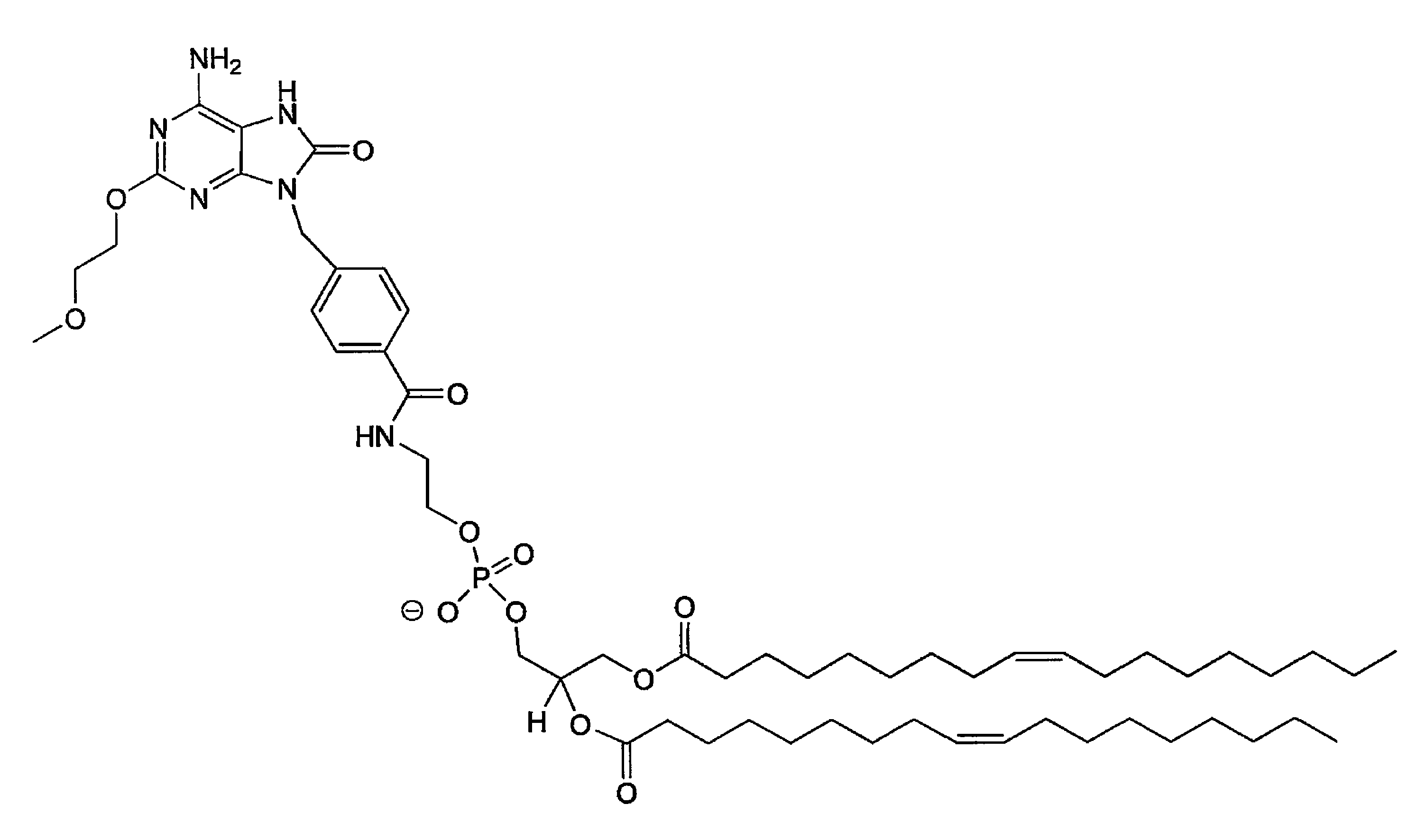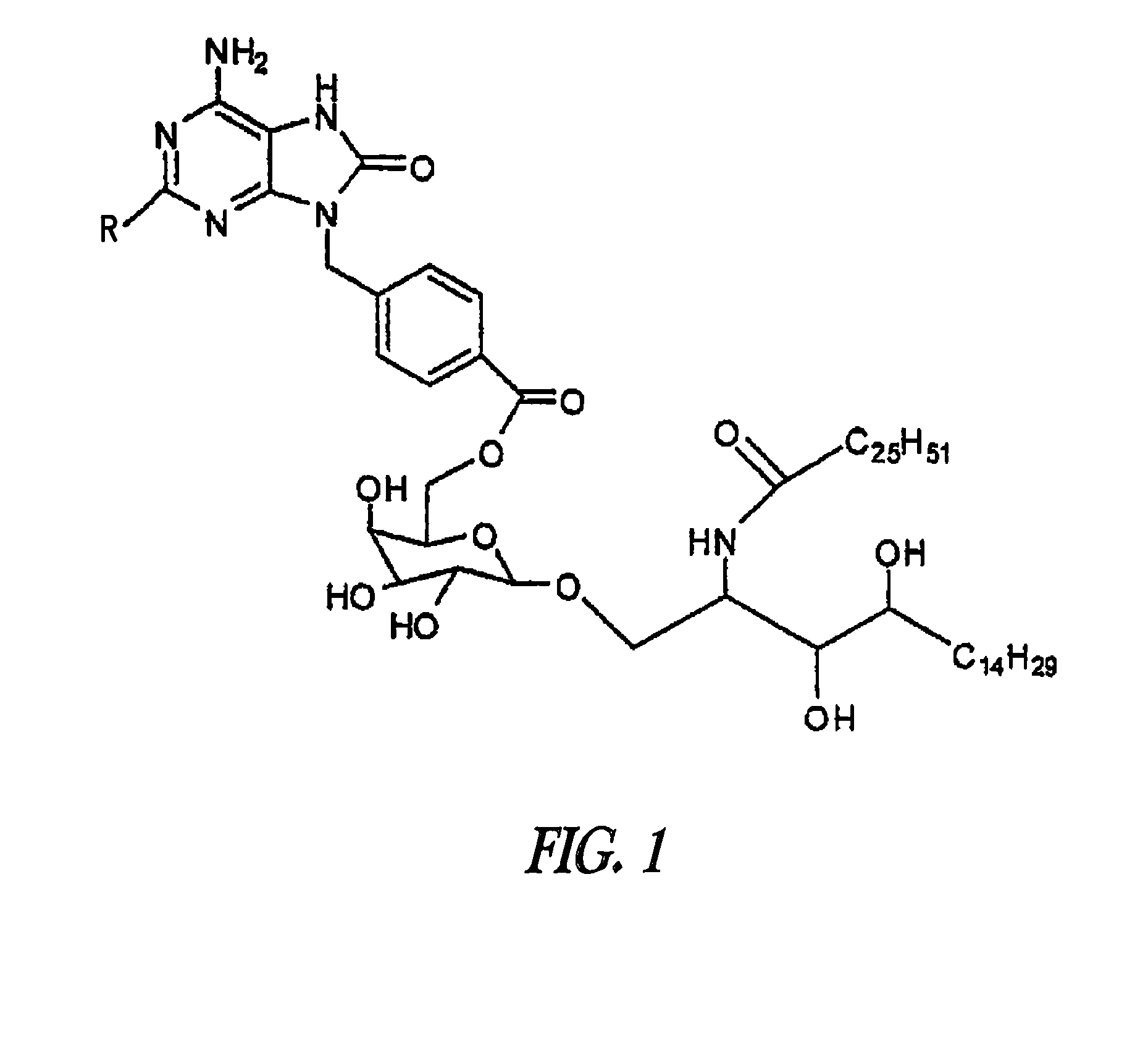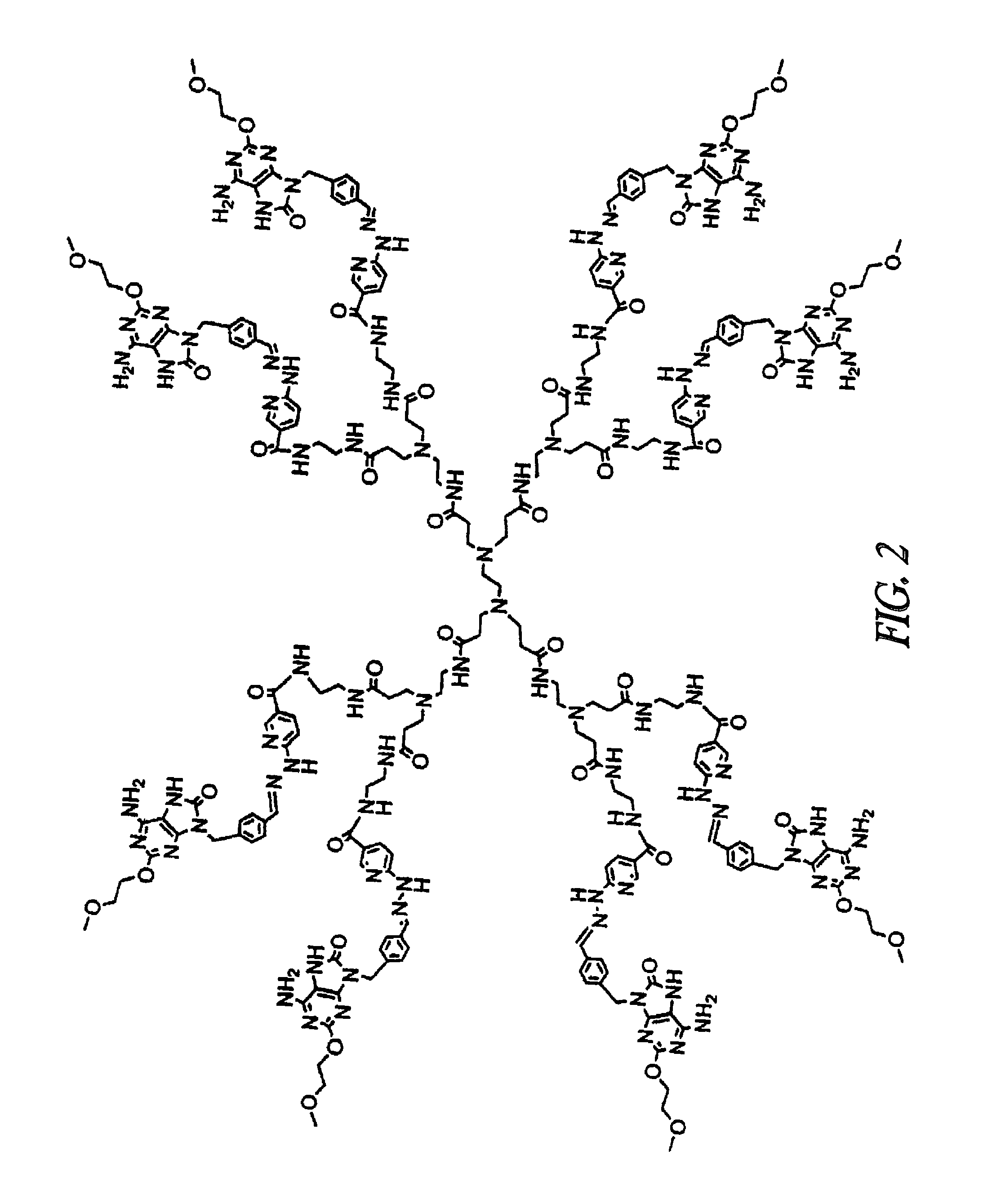Conjugates of synthetic TLR agonists and uses therefor
a synthetic tlr agonist and conjugate technology, applied in the field of conjugates of synthetic tlr agonists and their use, can solve the problems of major morbidity and mortality, vaccines are not used in acute settings, and are not effective in immunocompromised patients, so as to limit undesirable systemic side effects and optimize immune responses
- Summary
- Abstract
- Description
- Claims
- Application Information
AI Technical Summary
Benefits of technology
Problems solved by technology
Method used
Image
Examples
example i
[0283]Processes for preparing compounds of formula (I) are provided as further embodiments of the invention and are illustrated by the following procedures in which the meanings of the generic radicals are as given above unless otherwise qualified.
[0284]General Chemistry.
[0285]Reagents and solvents were acquired from Aldrich, Milwaukee, Wis. Uncorrected melting points were determined on a Laboratory Device MeI-Temp II capillary melting point apparatus. Proton nuclear magnetic resonance spectra were recorded on a Varian Unity 500 NMR spectrophotometer at 499.8 MHz or on a Varian Mercury NMR spectrophotometer at 400.06 MHz. The chemical shifts were reported in ppm on the scale from the indicated reference. Positive and negative ion loop mass spectra were performed by Department of Chemistry UCSD, San Diego, Calif. Elemental analyses were performed by NuMega Resonance Labs, San Diego, Calif. Column chromatography was conducted on E Merck silica gel (230-400 mesh) with the indicated sol...
example ii
[0297]UC-1V150 was covalently coupled to MSA first modified with a succinimidyl 6-hydrazino-nicotinamide acetone hydrazone (SANH) linker to yield a stable molecule with a characteristically altered UV spectrum. The UC-1V150 / MSA conjugate was identified by a UV absorption peak at 342 nm due to hydrazone formation, whereas SANH alone absorbed at 322 nm. Quantification of UC-1V150 molecules conjugated per MSA was extrapolated from a standard curve of UC-1V150-SANH (FIG. 1). Consistently the UC-1V150 / MSA conjugates were obtained at a ratio of about 5:1. The biological studies reported here were done by using 5:1 UC-1V150 / MSA.
[0298]Modification of MSA with SANH.
[0299]200 μL of MSA (25 mg / mL) was mixed with 100 μL of conjugation buffer (1M NaPi, pH=7.2) and 690 μl of PBS. 844 μg of SANH in 10 μL of DFM (40-fold molar excess to MSA) was added to protein solution (final concentration of MSA in reaction mixture is 5 mg / mL). After gentle mixing reaction was proceeded at room temperature for 2...
example iii
Materials and Methods
[0307]Compound Evaluation In Vitro.
[0308]The ability of TLR7 conjugates to stimulate and / or to inhibit cytokine production is assessed in murine bone marrow derived mononuclear cells (BMDM) that are highly enriched in dendritic cells, as well as in human peripheral blood mononuclear cells (PBMC) cells. BMDM are plated in 96 well plates and treated in triplicate with vehicle or various doses starting from 10 μM diluted in 3-fold increments down to picomolar concentrations. After 24 hours the supernatants are harvested and assayed for up to 30 different cytokines, chemokines and other mediators, using a Luminex bead assay system, and commercially available reagents. The cytokine / chemokine ELISA results are supplemented with quantitative mRNA expression measurements and with two-dimensional phosphoprotein analyses, to gain insight into the scope and mechanism of tolerance induction. At the time of supernatant harvest, media are replaced in the wells with MTT, as a ...
PUM
| Property | Measurement | Unit |
|---|---|---|
| size | aaaaa | aaaaa |
| concentration | aaaaa | aaaaa |
| total volume | aaaaa | aaaaa |
Abstract
Description
Claims
Application Information
 Login to View More
Login to View More - R&D
- Intellectual Property
- Life Sciences
- Materials
- Tech Scout
- Unparalleled Data Quality
- Higher Quality Content
- 60% Fewer Hallucinations
Browse by: Latest US Patents, China's latest patents, Technical Efficacy Thesaurus, Application Domain, Technology Topic, Popular Technical Reports.
© 2025 PatSnap. All rights reserved.Legal|Privacy policy|Modern Slavery Act Transparency Statement|Sitemap|About US| Contact US: help@patsnap.com



